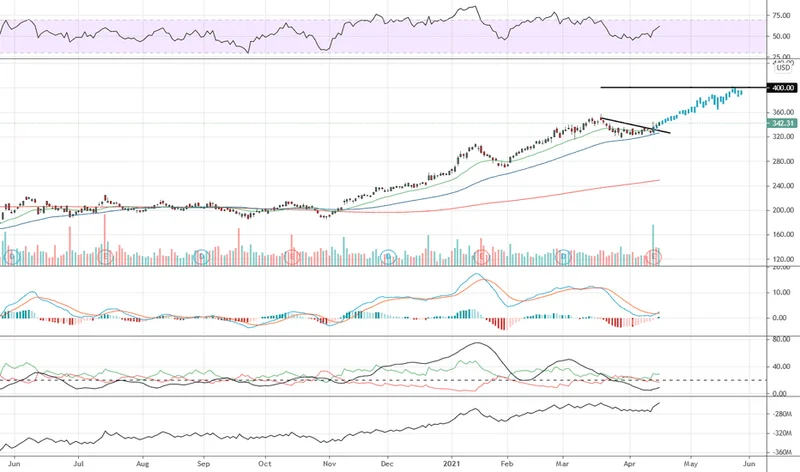Article Directory
On the surface, the story of Goldman Sachs’s third-quarter earnings report on October 14th was a simple, almost boring one. The numbers looked great. Revenue, earnings, net interest income—all sailed past Wall Street’s expectations. Investment banking, the heart of the old GS machine, was humming again. By every traditional metric, it should have been a day for champagne toasts and victory laps.
So why did the stock stumble? Why, in the face of this good news, did the market react with a collective shrug and a 2.1% premarket slide?
The easy answer, the one you’ll see in headlines like Goldman Sachs stock dips after Q3 expenses, headcount climb; earnings and revenue beat (GS:NYSE), points to a single line item: expenses. Both costs and headcount were higher than the analysts’ models predicted. The market, in its infinite and often infuriating short-term wisdom, saw this as a sign of inefficiency. A leak in the boat. A problem to be punished.
When I saw the stock drop against those strong earnings, I honestly just laughed. Not out of malice, but out of recognition. Because what the market is calling a "problem," I believe, is the single most exciting signal of the future I’ve seen from a Wall Street titan in years. They’re not seeing a leak in the boat; they’re missing the fact that Goldman is building an entirely new kind of engine below deck.
The Ghost in the Expense Line
Let’s be clear. That spending isn’t just for more catered lunches and corner offices. Buried in the footnotes and corporate-speak of that report is the real story: a massive, deliberate, and expensive push toward operational efficiency and the deep adoption of artificial intelligence. That "higher headcount" isn't just more bankers in pinstripe suits. It's an army of data scientists, machine learning engineers, and AI architects.
This is the kind of breakthrough that reminds me why I got into this field in the first place. What Wall Street is pricing as a simple cost overrun is, in reality, one of the most significant capital investments a financial institution can make today: an investment in intelligence itself.
Think of it this way. Imagine you’re watching a team build a revolutionary new type of jet engine. From the outside, all you see is a massive consumption of resources. You see steel being delivered, you hear the deafening sound of machinery, you see an army of engineers burning the midnight oil, and the costs are astronomical. If you only judge by the immediate resource burn, you’d say it’s a terribly inefficient project. But you’re missing the point. The goal isn’t to save on rivets and fuel during construction; the goal is to build an engine that will break the sound barrier and redefine air travel for decades.

Goldman Sachs isn’t just tweaking its existing business. It's fundamentally rebuilding its cognitive infrastructure—in simpler terms, it’s building a new brain. And that process is messy, expensive, and utterly terrifying to a market that wants clean, predictable, quarter-over-quarter growth.
This isn't about a lack of discipline. This is the price of ambition. The real question isn't "Why are their expenses so high?" but rather, "What incredible capabilities are they buying with that money?" What kind of predictive power, what level of risk-modeling, what speed of execution are they building that we can’t yet see?
Redefining 'Value' in an Age of Intelligence
This moment is so much bigger than a single earnings report from a single bank. It’s a perfect microcosm of the massive disconnect between how we traditionally value a company and what actually creates value in the 21st century. We are living through a paradigm shift on par with the dawn of the internet, and yet we’re still using old maps to navigate this new world.
Remember the late 1990s? Companies that poured millions into building websites and e-commerce platforms were often punished by investors for their high "capital expenditures." They were "burning cash" on unproven digital follies. We all know how that story ended. The companies that invested in the digital future, the ones that looked "expensive" and "inefficient" at the time, are the ones that own the world today.
We're at that same inflection point with AI. This is the real story, the one hiding in plain sight between the lines of a quarterly report—it's a fundamental rewiring of how a financial titan thinks, operates, and competes, and the market is treating it like an accounting error. It’s a breathtaking failure of imagination.
Of course, this kind of power comes with immense responsibility. Wielding predictive AI at this scale requires a new level of ethical oversight and a deep understanding of the potential for systemic risk. The goal can't just be to build a faster, more ruthless profit machine; it has to be about building a smarter, more stable, and ultimately more human-centric financial system. But you can't even begin that conversation until you've committed to building the tool in the first place.
So, as we watch the market fixate on the cost of the construction materials, we have to ask ourselves the bigger questions. Are we using 20th-century metrics to evaluate 21st-century transformations? How do you put a price on building a system that can out-think its competitors on a millisecond-by-millisecond basis, for years to come?
They're Building the Engine, Not Just Polishing the Chrome
Let the day traders and the algorithms panic over a few basis points of expense. They’re looking at the spreadsheet, not the blueprint. The real story of Goldman Sachs's Q3 report isn't one of runaway costs. It’s a quiet declaration of war—a signal that they are willing to pay the short-term price of Wall Street’s misunderstanding to secure a long-term, decisive advantage in the age of intelligence. They’re not just managing the present; they are buying the future, one data scientist at a time. And in a few years, we’ll look back at this moment not as a dip, but as the sound of the starting gun.

